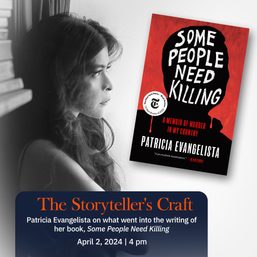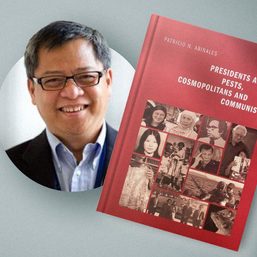SUMMARY
This is AI generated summarization, which may have errors. For context, always refer to the full article.
![[#RapplerReads] Growing up with banana ketchup](https://www.rappler.com/tachyon/2022/07/RReads-Banana.jpg)
Editor’s note: #RapplerReads is a project by the BrandRap team. We earn a commission every time you shop through the affiliate links below.
Ever since I was a kid, I have liked dipping my fried chicken into the sweet, tangy red sauce called banana ketchup. My meals wouldn’t be complete without this condiment, may it be during birthday parties or lunch breaks at school.
When cooking spaghetti at home, I would see my mother prepare noodles, ground beef, chopped garlic and onions, and a shiny bottle of banana ketchup. After cooking the noodles, she would saute the garlic and onion in a pan, then add half a kilo of ground beef together with banana ketchup. Like many Filipino families, we like our spaghetti sweet.
The first time I ate bolognese pasta in an Italian restaurant, I couldn’t help but compare. “I like your spaghetti more,” I told my mom while twirling pasta around my fork. I was around seven years old then and a notorious picky eater. At the time, the only way to entice me to eat healthy ulam like lettuce and broccoli was by drizzling banana ketchup on my plate.
When I was in college, I would find myself hoarding sachets of banana ketchup from a popular fast food chain so that I could eat my leftover burger at the dorm. Something about it makes any meal more delicious – from lumpiang shanghai to tortang talong. I always savor the way its sweet and fruity taste melts in my mouth.
Through the years, banana ketchup has never failed to bring me comfort and joy. But little did I know about its history and the life of Maria Orosa, the Filipino scientist and war hero who invented it.

In Feeding the Fight: The Story of Maria Orosa, a children’s story written by Ceej Tantengco and Sabrina Schnabel, I learned that Orosa invented recipes that helped Filipinos cook and sustain themselves during World War II. This includes banana ketchup, which she made by mashing together saba bananas, brown sugar, vinegar, and spices. It served as a substitute for the imported tomato ketchup when the country struggled with food security and experienced a shortage of tomatoes.
Today, banana ketchup is a Filipino household staple. For Filipinos living abroad, this condiment is one of the many things that remind them of home.

In one of the essays in Appetite for Freedom, Rosalinda Orosa, a Filipino journalist and Orosa’s niece, recounted how her aunt washed dishes, mopped the floors in restaurants, and worked in canning factories to support herself while studying at the University of Washington.
She wrote that Orosa earned her bachelor’s and master of science degrees in pharmaceutical chemistry in the United States. Shortly after, she was appointed as an assistant chemist in Washington – the first ever Filipino to hold such a prestigious position. But she later gave it up to work in the Philippines and serve the Filipino people.
When Orosa returned home, she taught Filipinos how to make soybean milk, cassava flour, calamansi powder juice, and agar from gulaman-dagat (seaweed). She also converted rice bran into a food rich in thiamine, a vitamin known to prevent beri-beri.
As a scientist, one of her first cooking inventions was the palayok oven which helped families from remote areas with no electricity cook food.
“Placing a bit of wire and tin inside the lowly earthen pot, she could bake anything in it, from chicken to cake,” the journalist wrote.
According to the book Appetite for Freedom, when the war broke out and the Japanese soldiers invaded the country, she joined the guerilla forces. She fed the Filipino and American prisoners with soyalac, a “life-giving” powdered soybean that helped keep them strong and alive. But to do so, she had to hide the powders inside bamboo tubes and smuggle them through Filipino carpenters (or male employees disguised as carpenters) working inside the prison camps.
Despite her significant contribution to food science and security, especially during the war, Orosa remained a much-neglected figure in Philippine history. We don’t read much about her in our history books or see her in documentaries on TV. But I’m glad people are starting to take notice and honor her work like this PumaPodcast episode.
Felice Prudente Sta. Maria, Filipino food historian and heritage advocate said, “Maria Orosa reminds [us] that food science is valuable to a country’s food security and its profits from innovative food products.”
She added that science has improved the heritage of making fruit preserves, pickles, dried and salted fish, and meats. It also enhanced food products’ nutritional value, safety, and sanitation.
Honestly, there are a lot of things I don’t know about Orosa, the OG Filipino food scientist who fed Filipinos and saved thousands of lives through her recipes and cooking inventions. I have yet to finish the book Appetite for Freedom, which contains essays about her life and her 700 recipes on canning, juices, vinegar, and more.
One thing’s for sure though, I’ll never look at my favorite banana ketchup the same way again. The next time I sit at the dining table with my friends and family, I’ll talk about Maria Orosa, her recipes, and how one of her most famous cooking inventions, banana ketchup, came to be. – Rappler.com
Tag us on social media with your latest book hauls, reviews, and recommendations using the hashtag #RapplerReads!
Add a comment
How does this make you feel?



![[ROUNDTABLE SERIES] Powering up: Building a bright future with energy security](https://www.rappler.com/tachyon/2024/04/Omnibus-with-guests.jpg?resize=257%2C257&crop_strategy=attention)

![[Rappler’s Best] Patricia Evangelista](https://www.rappler.com/tachyon/2024/04/unnamed-9-1.jpg?resize=257%2C257&crop=486px%2C0px%2C1333px%2C1333px)




There are no comments yet. Add your comment to start the conversation.